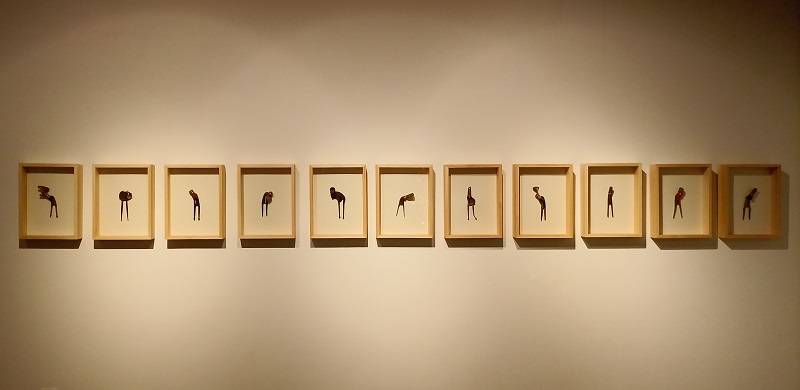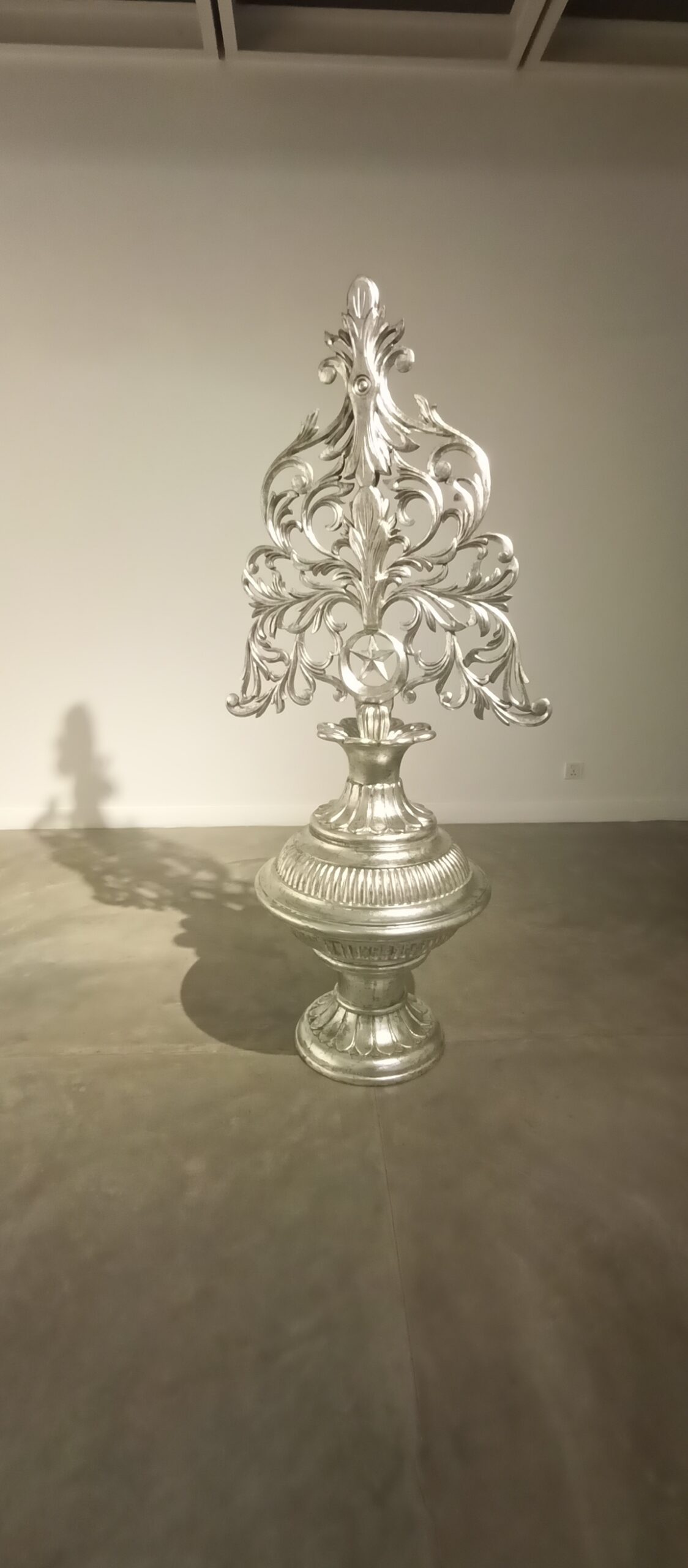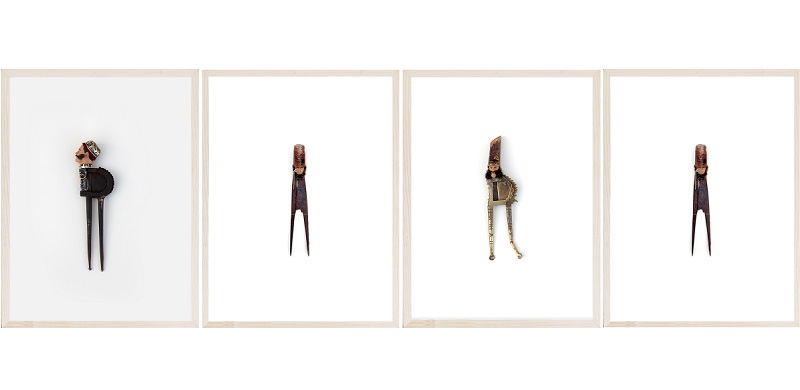
Who is consumed during the process of art-making? Is the art, artist, or spectator? Art can also be seen as capitalist production and a force for a specific class in society to buy and own it. Artists are still working for galleries, particular cultures, foundations, and institutions, and they are getting consumed more than what they are consuming as an industrial material and material culture. One should go through the history of art to discover this phenomenon and relate it with the time and technology of the 21st century. With time, we were consumed by art with a post-modernist approach. That removes the distinction of right and wrong in art-making.
The solo show by Affan Baghpati is a statement on the order of the artistic consumption in a society.
Born in 1991, Karachi, Pakistan, Affan Bhagpati graduated as a fine artist from the Indus Vallery School of Art and Architecture, Karachi, in 2015, and completed his master's from Beachouse National University (Mariam Dawood School of Visual Art and Design) Lahore, 2018.
 Baghpati's art practice revolves around the found objects that have a specific historical representation and scale. His earlier works included themes of transformation, juxtaposition, recreation, and revisiting the space/history – such as taxidermy parrots’ juxtaposition with found objects or small found figures from other regions juxtaposed with miniature things, such as spoons, kettles, etc. However, the hybridity of cultural/traditional figurines juxtaposed with meaning full objects is one of the strongest layers in his work. The shift and maturity in his art practice occurred within the contemporary school of thought provided by the institute at his master's degree along with his intensive exploration and experimental study within the selected domain of sculpture.
Baghpati's art practice revolves around the found objects that have a specific historical representation and scale. His earlier works included themes of transformation, juxtaposition, recreation, and revisiting the space/history – such as taxidermy parrots’ juxtaposition with found objects or small found figures from other regions juxtaposed with miniature things, such as spoons, kettles, etc. However, the hybridity of cultural/traditional figurines juxtaposed with meaning full objects is one of the strongest layers in his work. The shift and maturity in his art practice occurred within the contemporary school of thought provided by the institute at his master's degree along with his intensive exploration and experimental study within the selected domain of sculpture.
The representations and concerns of Affan are comparable to works of other artists such as Asma Mundranwala or Subodh Gupta's use of local objects. The scale is massive but conceptual concerns are traceable. One is reminded of the works of Bharti Kher, a South Asian artist who explores unwavering relationships with the body, narratives around it, and the nature of things – all are familiar themes with Affan’s work. We may find some similar threads of the process, which are very common with contemporary art practice, having concerns that are similar, and yet the representation is always unique.
Affan interest in material culture, ‘’the social reality grounded in the objects and architecture.’’ It includes tools, art itself, building monuments, religious images, and many other objects produced by humans. In contrast to it, however, the term used by the artist Bharti Kher is ‘’nature of things’. An understanding of the distinction between things and objects can enhance the behavior of the artist towards the found objects. For example, an artist might be unaware that objects might not be able to exist on their own, but things can.
Affan has emotional/personal concerns with some of the objects he is using, such as the Surmadani (a container that contains a powder form of eyeliner). As shown in the images below, most of his works use the Surmadani, and its juxtaposition is very repetitive. One can create an instant relation of the upper portion of the objects created in smaller sizes. Though the idea behind the series is leading to a path that at the moment might be unclear. Since many viewers can gravitate towards it due to the aesthetics, size, and use of the technique itself.
The Surmadani is acting as a black hole in his art practice. However, using a specific object and its representation in various forms can critique the artist’s previous works and concerns.
The connotations in most of the artworks created by Affan also revolve around a specific nature of consumed objects and how he consumes them through a particular method of art-making. The representation, for an instant, creates viewers’ experiences that can be personal, historical or personal. It is the combination of objects that becomes the combination of stories that existed in colonial and post-colonial times.
 The display of some of the objects is new yet historical; one may not be able to approach these objects as Affan is approaching them to create meta-narrative and talking about material culture. And the response to these objects carries a very post-modernist approach. One might see the essence of true or false flying away when we see the two objects together fitted forcefully at some of his works. One can also get lost in the stories that are narrated by objects.
The display of some of the objects is new yet historical; one may not be able to approach these objects as Affan is approaching them to create meta-narrative and talking about material culture. And the response to these objects carries a very post-modernist approach. One might see the essence of true or false flying away when we see the two objects together fitted forcefully at some of his works. One can also get lost in the stories that are narrated by objects.
The rich history of the South Asia region has created specific influences for creative processes that have shaped the course of responding to art-making. Affan Baghpati's works are rich with iconography and symbols. His work responds with many layers that include personal associations, colonial pasts, post-colonial history, modern and post-modern ideologies, and reflection on consumerism. However, art came into existence with specific dynamics of Fluxus, and the way artists respond to ideas and the nature of surroundings is always unique and worthy.
The solo show by Affan Baghpati is a statement on the order of the artistic consumption in a society.
Born in 1991, Karachi, Pakistan, Affan Bhagpati graduated as a fine artist from the Indus Vallery School of Art and Architecture, Karachi, in 2015, and completed his master's from Beachouse National University (Mariam Dawood School of Visual Art and Design) Lahore, 2018.
 Baghpati's art practice revolves around the found objects that have a specific historical representation and scale. His earlier works included themes of transformation, juxtaposition, recreation, and revisiting the space/history – such as taxidermy parrots’ juxtaposition with found objects or small found figures from other regions juxtaposed with miniature things, such as spoons, kettles, etc. However, the hybridity of cultural/traditional figurines juxtaposed with meaning full objects is one of the strongest layers in his work. The shift and maturity in his art practice occurred within the contemporary school of thought provided by the institute at his master's degree along with his intensive exploration and experimental study within the selected domain of sculpture.
Baghpati's art practice revolves around the found objects that have a specific historical representation and scale. His earlier works included themes of transformation, juxtaposition, recreation, and revisiting the space/history – such as taxidermy parrots’ juxtaposition with found objects or small found figures from other regions juxtaposed with miniature things, such as spoons, kettles, etc. However, the hybridity of cultural/traditional figurines juxtaposed with meaning full objects is one of the strongest layers in his work. The shift and maturity in his art practice occurred within the contemporary school of thought provided by the institute at his master's degree along with his intensive exploration and experimental study within the selected domain of sculpture.The representations and concerns of Affan are comparable to works of other artists such as Asma Mundranwala or Subodh Gupta's use of local objects. The scale is massive but conceptual concerns are traceable. One is reminded of the works of Bharti Kher, a South Asian artist who explores unwavering relationships with the body, narratives around it, and the nature of things – all are familiar themes with Affan’s work. We may find some similar threads of the process, which are very common with contemporary art practice, having concerns that are similar, and yet the representation is always unique.
Affan interest in material culture, ‘’the social reality grounded in the objects and architecture.’’ It includes tools, art itself, building monuments, religious images, and many other objects produced by humans. In contrast to it, however, the term used by the artist Bharti Kher is ‘’nature of things’. An understanding of the distinction between things and objects can enhance the behavior of the artist towards the found objects. For example, an artist might be unaware that objects might not be able to exist on their own, but things can.
Affan has emotional/personal concerns with some of the objects he is using, such as the Surmadani (a container that contains a powder form of eyeliner). As shown in the images below, most of his works use the Surmadani, and its juxtaposition is very repetitive. One can create an instant relation of the upper portion of the objects created in smaller sizes. Though the idea behind the series is leading to a path that at the moment might be unclear. Since many viewers can gravitate towards it due to the aesthetics, size, and use of the technique itself.
The Surmadani is acting as a black hole in his art practice. However, using a specific object and its representation in various forms can critique the artist’s previous works and concerns.
The connotations in most of the artworks created by Affan also revolve around a specific nature of consumed objects and how he consumes them through a particular method of art-making. The representation, for an instant, creates viewers’ experiences that can be personal, historical or personal. It is the combination of objects that becomes the combination of stories that existed in colonial and post-colonial times.
 The display of some of the objects is new yet historical; one may not be able to approach these objects as Affan is approaching them to create meta-narrative and talking about material culture. And the response to these objects carries a very post-modernist approach. One might see the essence of true or false flying away when we see the two objects together fitted forcefully at some of his works. One can also get lost in the stories that are narrated by objects.
The display of some of the objects is new yet historical; one may not be able to approach these objects as Affan is approaching them to create meta-narrative and talking about material culture. And the response to these objects carries a very post-modernist approach. One might see the essence of true or false flying away when we see the two objects together fitted forcefully at some of his works. One can also get lost in the stories that are narrated by objects.The rich history of the South Asia region has created specific influences for creative processes that have shaped the course of responding to art-making. Affan Baghpati's works are rich with iconography and symbols. His work responds with many layers that include personal associations, colonial pasts, post-colonial history, modern and post-modern ideologies, and reflection on consumerism. However, art came into existence with specific dynamics of Fluxus, and the way artists respond to ideas and the nature of surroundings is always unique and worthy.

